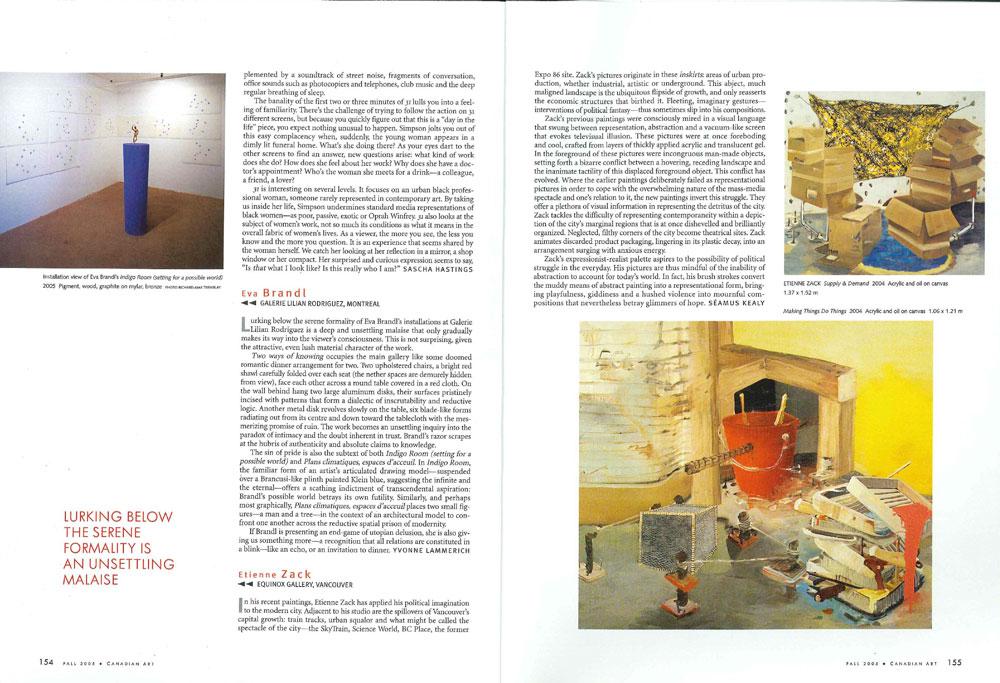Equinox Gallery, Vancouver
In his recent paintings, Etienne Zack has applied his political imagination to the modern city. Adjacent to his studio are the spillovers of Vancouver’s capital growth: train tracks, urban squalor and what might be called the spectacle of the city—the SkyTrain, Science World, BC Place, the former Expo 86 site. Zack’s pictures originate in these inskirts: areas of urban production, whether industrial, artistic or underground. This abject, much maligned landscape is the ubiquitous flipside of growth, and only reasserts the economic structures that birthed it. Fleeting, imaginary gestures—interventions of political fantasy—thus sometimes slip into his compositions.
Zack’s previous paintings were consciously mired in a visual language that swung between representation, abstraction and a vacuum-like screen that evokes televisual illusion. These pictures were at once foreboding and cool, crafted from layers of thickly applied acrylic and translucent gel. In the foreground of these pictures were incongruous man-made objects, setting forth a bizarre conflict between a hovering, receding landscape and the inanimate tactility of this displaced foreground object. This conflict has evolved. Where the earlier paintings deliberately failed as representational pictures in order to cope with the overwhelming nature of the mass-media spectacle and one’s relation to it, the new paintings invert this struggle. They offer a plethora of visual information in representing the detritus of the city. Zack tackles the difficulty of representing contemporaneity within a depiction of the city’s marginal regions that is at once dishevelled and brilliantly organized. Neglected, filthy corners of the city become theatrical sites. Zack animates discarded product packaging, lingering in its plastic decay, into an arrangement surging with anxious energy.
Zack’s expressionist-realist palette aspires to the possibility of political struggle in the everyday. His pictures are thus mindful of the inability of abstraction to account for today’s world. In fact, his brush strokes convert the muddy means of abstract painting into a representational form, bringing playfulness, giddiness and a hushed violence into mournful compositions that nevertheless betray glimmers of hope.
From the Fall 2005 issue of Canadian Art.









